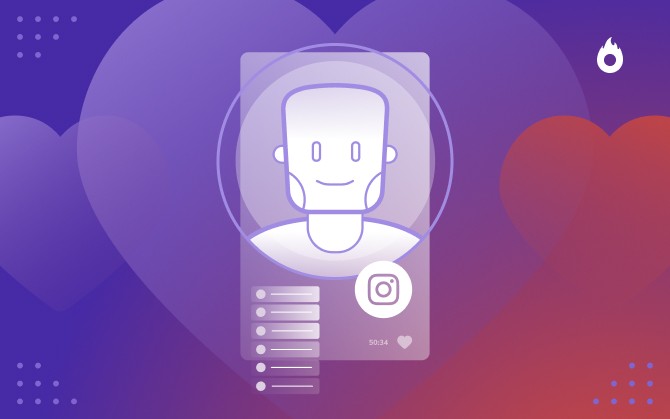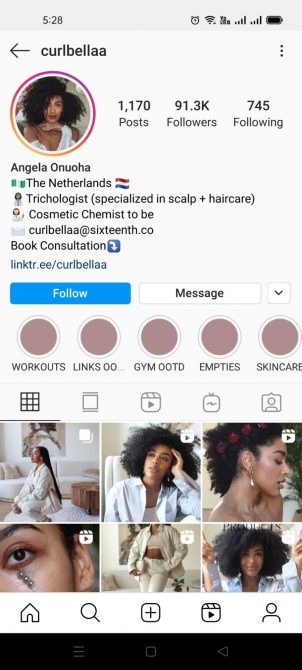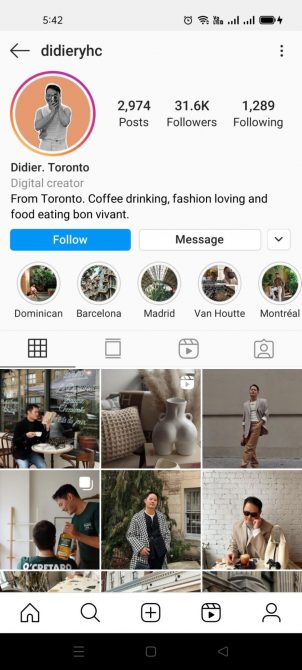
What are Micro-influencers, and How Can They Help Your Business Grow?
Read the article to discover how micro-influencers can boost your audience engagement.

Many online businesses and content creators rely on social media influencers to increase brand awareness and sales.
According to this Insider Intelligence report, the influencer marketing industry is likely to become a 15 billion-dollar industry in 2022. This means that the social media influencers are here to stay.
Influencers have authority in a niche and a loyal audience who follow their recommendations. For example, Miette Dierckx is a food and travel influencer. She works with Coca-cola as a brand ambassador, regularly posting photos of herself with Coke in her hand on Instagram.
Michelle Phan does makeup tutorials and demonstrations. She used her influence to start and grow her multimillion-dollar cosmetic line, EM Cosmetics.
Social media influencers are classified into mega, macro, micro, or nano influencers, depending on the number of followers. Businesses use influencers in different marketing strategies to achieve their commercial goals.
In this article, you are going to learn about micro-influencers.
What is a social media influencer?
A social media influencer is anyone who has power and influence in social media.
Some of the top characteristics of a social media influencer include:
- Authority in a specific niche.
- Have a huge audience.
- Can persuade others to act based on their recommendations.
You don’t need to be a celebrity to become a social media influencer. As long as people share your interests, you can persuade them to do something you believe would benefit them.
Huda Kattan is an example of a social media influencer. She is a makeup expert who gained over 49 million followers on Instagram by posting makeup tutorials.
Christiano Ronaldo is another famous social media influencer with over 400 million followers on Instagram. He posts sportswear from big brands to persuade his followers to buy them.
Can anyone become an influencer?
The short answer is yes. Anyone can become an influencer because any time someone talks about their interests on social media, there will be people who share those interests!
There is no secret formula to becoming a social media influencer, but you can follow certain steps to grow your audience on social media.
- Select a niche – Decide the niche you want to become an influencer in. You become an influencer because you post consistently about one topic, not many topics.
For example, if you want to be a beer influencer, you cannot talk about beer brands today and talk about clothing brands for men the next day. It will be difficult to grow a community of people who share your interests.
- Understand your audience’s needs and pain points – To attract and engage with your target audience, you must know their needs. So, when you are posting on social media, your message resonates with what they are going through.
Using the beer example, do research on the type of people likely to be part of a beer community. Learn about their needs, and interests because when you talk like a beer lover, other beer lovers will listen to you.
- Create relevant content – Once you know who your target audiences are, start crafting content that resonates with their interests. In marketing, we call it achieving customer-content fit. As a beer influencer, you can share their beer tasting experiences on Instagram.
- Engage with the audience – Posting the right content is not enough if you want to build a community that trusts your opinion. You have to engage with their comments as friends do on their social media posts. Answering their questions or replying to comments makes your audience feel that you value their opinions.
- Post regularly – The downside of becoming an influencer is that it takes patience and consistency, which most people lack. They give up when the expected results don’t come soon. If you are not ready to put in the time and effort to achieve this goal, don’t waste your resources. You cannot become an influencer overnight!
What is influencer marketing?
Influencer marketing is a type of social media marketing in which people with many followers recommend your product to their audience.
Influencer marketing works because of the massive trust social influencers have built with their followers. So, when they endorse a product, potential customers will see it as a form of social proof.
Influencer marketing is an effective way to grow your business on social media. First, most influencers are easy to access and negotiate with compared to celebrities. You can create a partnership that benefits both them and your business without going through gatekeepers like a personal assistant or agency.
Influencer marketing also improves your brand’s image. Your target audience will believe your product is real and helpful when they see social media influencers who they trust, use and preach its benefits.
If you want to learn more about influencer marketing, including how the strategy works and how to hire an influencer to grow your business, check out this article we curated for you.
What is a micro-influencer?
A micro-influencer is someone with a larger social media presence than that of a normal person but less than that of a celebrity. Compared to big influencers, micro-influencers have a specialized niche and, as a result, have a deeper connection with their followers who value their expertise.
Followers of micro-influencers see them as normal people. They are more personable and trustworthy than celebrities or businesses. So, their audiences are more likely to listen to what they say and act on it.
Angela Unuoha is an example of a micro-influencer. She built a community of beauty lovers by sharing expert skincare and hair tutorials.

Didier is also another micro-influencer. He posts coffee reviews on his Instagram page.

Businesses are shifting from working with a few macro-influencers to many micro-influencers deeply trusted by niche communities.
How many followers does a micro-influencer have?
Micro-influencers have between 1,000 and 100,000 followers on social media. Having these numbers of followers is not enough to make you a micro-influencer. You must consistently create content on one or two topics and get engagement from your followers to qualify to be a micro-influencer.
Think of a food blogger promoting a new meal prep service or a car enthusiast showing a new car wax to their audience on Instagram.
How are micro-influencers different from other influencers?
While most businesses have previously worked with macro-influencers, they are now shifting to micro-influencers.
If you don’t know, macro-influencers are people with between 500,000 to 1 million followers on social media.
The shift is because businesses are noticing the difference between popularity and influence. Macro-influencers having a huge following doesn’t guarantee that their content will perform well. These influencers are also less accessible compared to micro-influencers.
Conversely, brands are now working with micro-influencers because:
- They are cost-effective – Small businesses cannot afford macro-influencers because they have a small budget for influencer marketing. The only option left is to work with micro-influencers.
- They have niche communities – Micro-influencers have a small, yet more targeted audience than macro-influencers. They usually talk about only one topic on their social media pages, allowing them to connect deeper with their audience like a friend to a friend. So, when they recommend a product to their audience, the support is overwhelming.
- Micro-influencers have high engagement rates – The lower the number of followers an influencer has, the higher their engagement rate. Micro-influencers are more likely to engage with their audience than macro and mega influencers.
Nano-influencers are people with anywhere between 100 to 10,000 followers on social media with a high engagement potential.
Nano-influencers and micro-influencers are similar in some ways because they focus on a specific niche and their audiences view them as experts in their particular fields. The difference is that micro-influencers have the potential of reaching more people compared to nano-influencers.
You can learn more about nano-influencers in this article.
How do micro-influencers work?
Micro-influencers use their following to promote products relevant to their interests and expertise, either for money or just because they like. They collaborate with brands to post branded content on their social media pages, including unboxing, talking about, and using the product.
For example, a micro-influencer may upload a makeup tutorial sponsored by a beauty brand.
Source: Instagram
Before approaching micro-influencers, brands do extensive research because they want to work with people who align with their target audience. This way, your sponsored posts will get high engagement and interaction rates from niche communities.
Most micro-influencers charge their customers per post on social media. You agree on the number of posts based on your budget. And they do the rest to make their followers love and use your product.
How to use micro-influencers to grow your business
Micro-influencers are more effective in influencer marketing than macro and nano-influencers because they engage with their audience at a deeper level. Their followers are not so many that they cannot interact on a one-on-one basis. So, their engagement rates are likely to be high.
Micro-influencers also get high engagement rates because they apply creativity when crafting social media posts. Instead of dictating how you want the posts to appear, let micro-influencers put their imagination and credibility to use. They will prepare exciting posts that get the attention of their followers.
Have you considered working with brand ambassadors? Collaborating with a brand ambassador involves making a micro-influencer the face of your product and brand. They are better compared to working with different micro-influencers because their audience becomes loyal to your product over time.
Brand ambassadors get more creative and learn the content types that work best for their audience because they have used your product for a long time. Conversely, an on-and-off relationship with micro-influencers doesn’t give them enough time to know your product well and describe it based on their experience.
Travel and foodie micro-influencer Miette Dierckx, with more than 36,000 Instagram followers, has worked with Coca-Cola as their brand ambassador. Her Coca-cola-sponsored posts generate lots of engagement from followers because of the creativity she puts into them.
Source: Instagram
Apart from big brands, micro-influencers also work with small and medium-sized businesses. So, if you are a small business, approach micro-influencers who you feel align with your target audience.
Micro-influencers may be the marketing force of the future
As you can see, Influencers don’t have to be celebrities or have millions of followers, and influencer marketing can be a strategy for small and big businesses alike! A very effective strategy, in fact, with a focus on audience engagement.
The best influencers engage with their audience at a peer-to-peer level. These people run communities where followers see them as experts in their niche. They are also easily accessible by entrepreneurs and more cost-effective compared to macro-influencers.
Start working with micro-influencers because they have the potential to increase your brand awareness, generate sales and reach new audiences!
Oh, if you want to learn more about the right channels to communicate with your audience, be sure to check out this article!







